Promises me I’m as safe as houses
As long as I remember who’s wearing the trousers
I hope he never lets me down again
Never let me down
Twenty five years ago this month, Depeche Mode was one of the biggest groups on the planet. Three men and one prop. Martin Gore, the pretty face and the songwriting talent, the man with the melodies and the ideas and the sometimes daft lyrics. Dave Gahan, the thug, the angel, the unbelievable voice, cold and controlled and icy, somehow vulnerable even in his strength. Alan Wilder, the musician, the arranger. Taking Gore’s chords and melodies and transforming them into a synthetic dance onslaught. Textures layered and melding together, the artificial alongside the organic, hook upon hook weaving through, implying and extending Gore’s harmonic structures. Fourth member Andy Fletcher? A non-musician mime that mutely stands on stage, ventrilloquizes, manages the band.
Nine years into their careers Depeche Mode embarked on a grueling 101-show international tour, in support of their album Music For the Masses. The tour culminated in a staggering show at the Rose Bowl, attended by more than 60,000 people.
The show was filmed by director D.A. Pennebaker for a documentary on the band and its fans, eventually released, along with an album of the performance, as Depeche Mode 101. (Pennebaker is probably best known for his Bob Dylan documentary Don’t Look Back, but it’s his David Bowie concert film Ziggy Stardust and the Spiders from Mars that Depeche Mode 101 most resembles)
Prior to the concert footage, the documentary gives insight into some of the on-stage strangeness of the band, and of the group’s internal politics. Off-stage, singer Gahan comes across as loutish and arrogant. Songwriter Martin Gore disappears, even when he’s on screen. Fourth wheel and non-musician Fletcher briefly makes himself useful by describing the band. “Martin’s the songwriter, Alan’s the good musician, Dave’s the vocalist, and I bum around.” And musician/arranger Alan Wilder proves him right, with little fanfare, in a sequence shot from behind a bank of keyboards, as he casually describes how different sounds are split across the instruments, and how the live arrangements are split between himself, songwriter Martin Gore, and a tape machine.
On-stage, Gahan at least is transformed, his pre-gig bluster changing into some kind of strange, thrusting energy. Unrestrained by any instrument, he stalks the stage, he shouts between singing, his voice hoarse and unrestrained. And at other moments he seems lost and weak, until the hook rolls back around and he rises to and assaults the crowd again.
At the end of their set they and their tape machine launch into “Never Let Me Down Again.” They are to a man sweaty and weary looking. Between phrases you can see Gahan’s mouth working in closeup,his face tightening, spastic, body rebelling even while his voice is restrained. “I’m taking a ride with my best friend.” The music ominous, the melody almost literally monotonous, droning. “I hope he never lets me down again.” The lyrics are stupid, real “moon in June” stuff, but they’re set in such a strange context, and the delivery is so intense, that it begs consideration.
Like many of Depeche Mode’s most affecting songs, there’s a distance, and a loneliness and despairing of communication, of being heard, of hearing. This sung by a man throwing himself about the stage in a desperate attempt to reach the audience in front of him, while the man who wrote it sings harmonies from behind his keyboard.
Gahan stops, breaths, staggers, thrusts out his hips, yells wordlessly, an octave higher than the sung range of the song.
“Let me hear you,” he screams. “Let me hear you!”
Finally he steps out onto the thrust of the stage and starts gesturing to the audience, waving his hands from side to side. And the lights come up and for the first time the camera sees Gahan and the audience together, the towering mass of waving arms rising above him, in front of him, all around him.
I get chills every time. It’s not just his confidence, the strutting and yelping, or the pulsing, looping chords. It’s an aesthetic reaction to him, to the whole scene, the beautiful lone figure thrust out over and surrounded by the massed crowds. It evokes the grand religious visions of Gustave Doré, particularly in his illustrations of Milton’s Paradise Lost. Of Satan, before the assembled cohort of angels, or looking out over Paradise.
Doré himself had a career not dissimilar to Depeche Mode. He was a prolific and tireless craftsman who was energetic and inventive, who relied on his collaborators, the engravers whose labors caused his pencil and wash drawings to take form in wood, to bring his work to its final form. (Like a band name represents a group of individuals, so we might think of “Gustave Doré” more accurately as a group of men, a kind of syndicate of illustrators and engravers, that shared their collective name with that of their founding member and progenitor.)
And like Depeche Mode, Doré was one of the most popular artists of his era; but critical acclaim eluded him. He was a good draftsman, critics sniffed. But. But. Was he just too well-known to be well-respected too? Or too well loved?
Not to mention the “illustrator” issue…
You see, the past two hundred years of aesthetic criticism have not been kind to function.
It’s why “craft” is a pejorative. It’s why design forms its own sub-category of visual art, related, somehow, to the field, like a second cousin once removed. It’s why soap operas and romance novels and video games and quilts and pottery and wood carvings and, hell, flower arrangement have been kept at an arm’s length from Art, an asterisk at best. Function implies craft. Function precludes intelligence, the demands of function displacing the desires of author.
Utility is at the heart of the critical attitude towards dance music.
Like pornography, you can evaluate dance music by the bluntest measures possible – it’s efficacy. Did you dance? Did other people dance? How many other people? How vigorously? The crassness of this measure tends to ward off deeper examination.
And that could be why Depeche Mode will likely remain a band well loved, but largely un-examined. Why some of the most interesting music made in the past four decades could be relegated to roller skate rinks and cut-out bins.
And when I squinted the world seemed rose-tinted
And angels appeared to descend
To my surprise with half closed eyes
Things looked even better than when they were opened

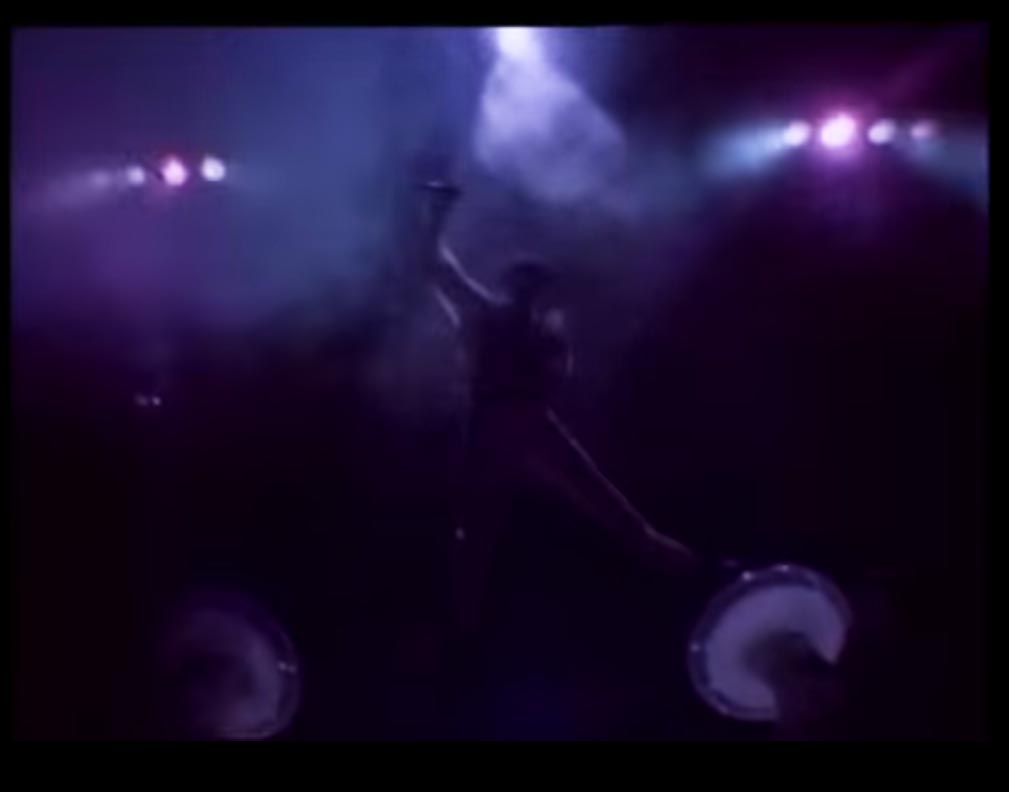
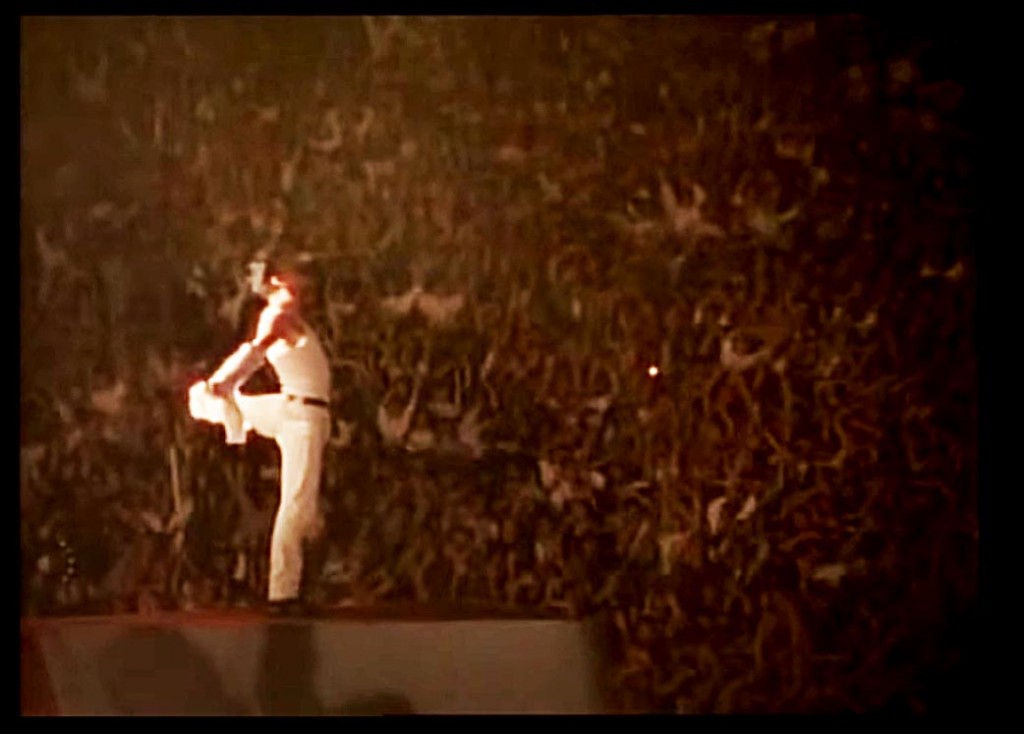
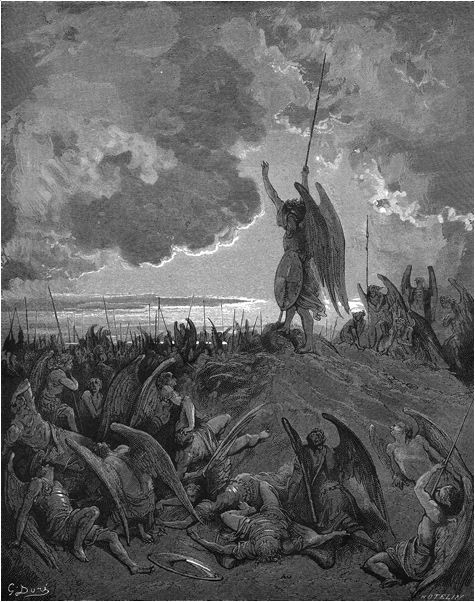
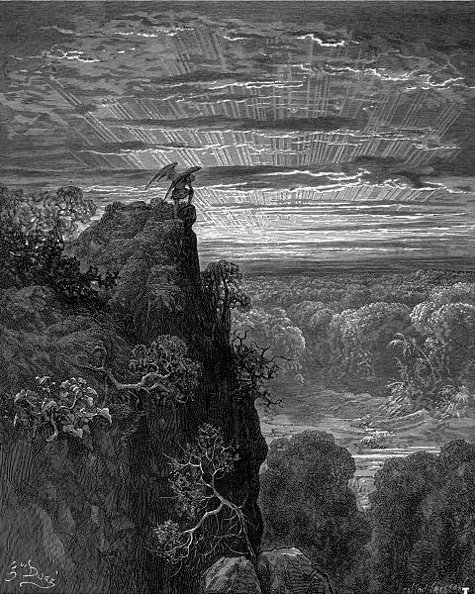
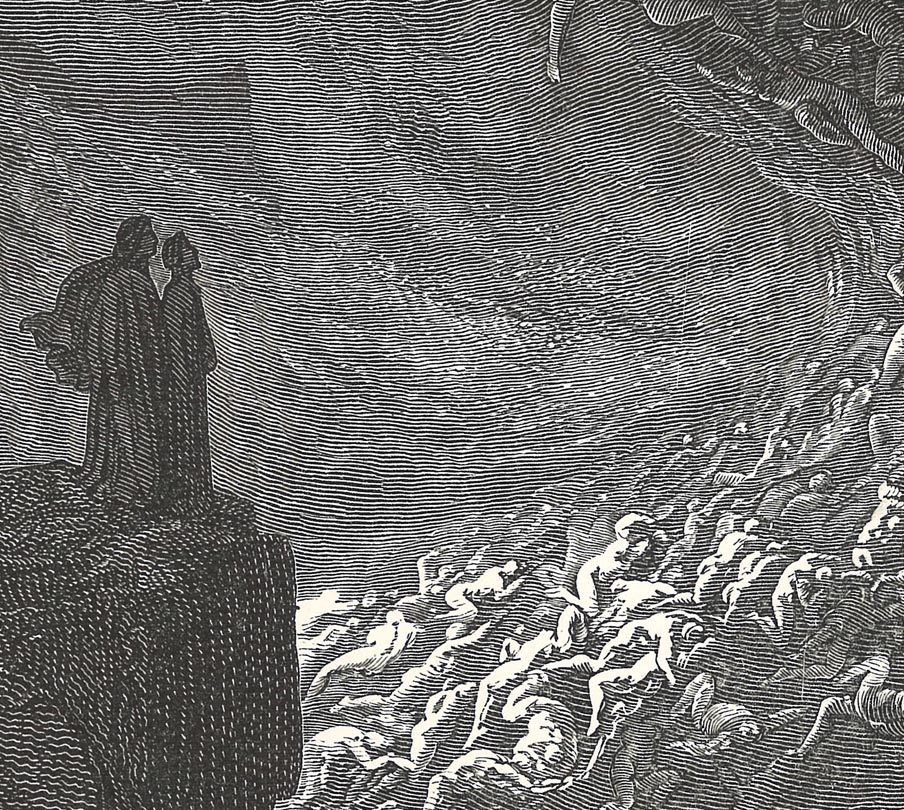
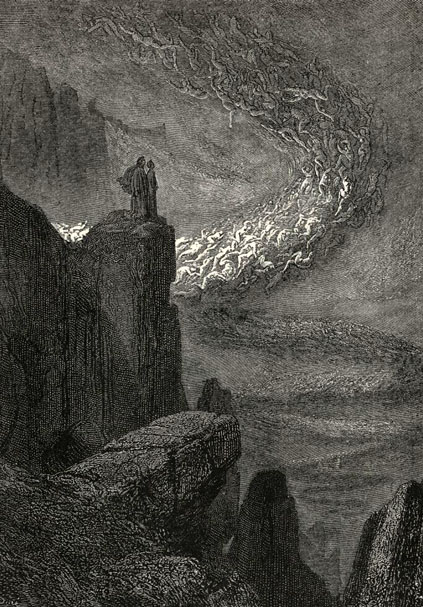
Nice article, Sean … your thinking is evolving on craft, I suspect. Well, you know what I think but why not spread the invective around, it’s HU, after all …
The last 100 years have been brutal for craftsmanship in the arts, it’s been sneered at, poorly paid and mocked openly by academia and critics. And yet, without craftsmanship, there is no technique and without technique, you cannot eventually throw away technique, which is what the process was once meant to do.
Drawing pictures ALWAYS means telling a story, and ALWAYS means learning how to attract people’s eyes. Doré was a master at this and I think this frightens off art critics because they mostly do not understand art half as well as they think they do. The essential nature of drawing is a mystery to critics and a lot of artists, I fear. Drawing is truth and truth is beauty … and craftsmanship means paying attention to the truth, to the truth of the eye.
Technique is not self-expression or style, they come after technique, not before.
It’s fashionable now to draw badly or not at all or to make everything look like designed, never drawn … it’s fashionable now to pretend that this is normal. But dismissing craftsmanship is dismissing adulthood and that’s the real problem. Being an artist is not children’s play. It’s adult work.
It’s part of the American infantilization of art, politics and commerce.
“You see, the past two hundred years of aesthetic criticism have not been kind to function.” The hundred and sixty years before the past forty years, maybe. More recently, the tendency has been in the opposite direction: toward study and defense of works in previously despised genres – sometimes of works that don’t warrant the defense – and toward emphasizing the aspect of unassuming craftsmanship in the careers of great artists (Shakespeare as the theater man playing to the cheap seats, Mozart accommodating singers by inserting extra arias for them) – sometimes to the point of misrepresenting artists by deemphasizing their more pretentious qualities.
Kailyn (Kent?) actually touches on this in the comment section for the Ms. Marvel article that was published on this site yesterday: the trend among comic creators and fans toward thinking of superheroes as being just as important as the major world religions.
Addendum: That is, Kailyn touches on a vulgar manifestation of the same trend manifest in current scholarly criticism.
When I was actively studying/reading/digesting art criticism (1998- 2005) craft was working its way back into the discussion, but in a very patronizing way. You have “fibre artists” and serious discussions of pottery and other examples of form-front-loaded art forms, but always in a ways that’s distanced and cautious, and often times with the biography of the creators involved doing the heavy lifting.
If this multi-century trend is in complete reversal, then I personally am unaware of it. What I’ve seen are baby steps at reincorporation of art forms that never should have been ejected in the first place.
Then again, Dore just received a major exhibition at the Musee d’Orsay. If only they had scheduled it a year ealier, I would have been able to attend….
http://www.musee-orsay.fr/en/events/exhibitions/in-the-musee-dorsay/exhibitions-in-the-musee-dorsay/article/gustave-dore-37172.html?tx_ttnews%5BbackPid%5D=254&cHash=2a50ac0116
What shame you missed the Doré, Sean. There’s a neat video the MdO made about it here, plus there’s other videos of his blocks and drawings, in French …
http://youtu.be/4yd1lRAs1F0
The presence of the hand is paramount in his drawings, that, combined with his theatricality is what makes him so exciting to look at. The funny thing is, few publishers or editors are attracted to this book illustration style anymore, they certainly don’t want to pay for it … but when I meet readers, they seem to notice it and enjoy it. The richness, the craftsmanship … it grabs readers.
Though I enjoyed this essay, I wouldn’t classify Depeche as “dance music” and I don’t think most of their critics do (perhaps in their early days they were viewed this way). Rather, until the last decade or so, critics have had a knee-jerk reaction against anything electronic because it lacks “authenticity” and “realness.” And as for them ending up in cut-out bins, I wouldn’t worry about that happening anytime soon. Second hand copies of their original LPs in solid condition go for $20 on average.
Hey Chris,
Although I’d agree with you that it’s a dubious classification, I’ve read a lot of contemporaneous criticism, especially from the British press, that was of the “who do these trendy dance guys think they are?” variety. Especially with songs, ala “Everything Counts,” that have ulterior purposes alongside danceable elements.
And yeah, electronic music in general seems pretty undervalued. Strange when, at least in their case, the arrangements could be so rich and complex.
As for their LPs trading at high prices, can’t say I’m surprised, especially seeing how awful some of the early CDs sound! Some Great Reward has to be the thinnest sounding CD I’ve ever purchased…
Mahendra– I’m hoping to catch the exhibition when it moves to Canada this summer! Pricing flights this week…
Didn’t know it’s coming here, this changes everything … thanks for letting me know. I need to get out of the house at least once this year.
It’ll be at the National Gallery! When I get flights I’ll let you know the dates in case you can meet up :) Cause Canada’s pretty small, right?
http://www.gallery.ca/en/see/exhibitions/upcoming/details/gustave-dore-1832-1883-master-of-imagination-7011
Yeah, Canada’s tiny, heck, we can see Russia from our window. The NG, it’s in Ottowa, which is about 3 hours from Montreal. Yes, let me know, I’ll try to meet up and we can embarrass ourselves drooling in front of a Doré block.
May be cheaper to take the train and/or bus, you may want to check it out. The air here is thicker so the airlines charge more to plow you thru it.
“It’s why soap operas and romance novels and video games and quilts and pottery and wood carvings and, hell, flower arrangement have been kept at an arm’s length from Art, an asterisk at best”
Add comedy and horror to that list, too.
And hooray for the Doré studio.
And pop-music critics have the worst taste, just the worst.
I think that Doré is pretty highly valued these days?
In any case, it’s interesting maybe to think about the fact that one thing that isn’t exactly on the craft/no craft divide is criticism — which, despite being one of the oldest arts, with a quite illustrious history, is basically reviled by everybody.
I don’t think he’s arrived critically, not quite yet, but he may well be getting there…
I dont know if it’s common knowledge, but he was a great caricaturist, and produced a large scale (200 page) early comic, under the influence of Toffler. But he apparently felt a strong desire to be liked by critics as well as his public, and explicitly left caricature behind for illustration, and later attempted to do the same to illustration and move into oil painting, a move that didn’t have the same popular acceptance. Tho his monumental Biblical paintings met with great success touring America as a side-show exhibition. (This was apparently seen as further proof of their unworthiness…)
The wonderful Art Young was a huge fan of his.
Doré was also a magnificent sculptor:
https://www.google.com/search?tbm=isch&hl=fr&source=hp&q=Gustave+Dor%C3%A9+statue+Dumas&gbv=2&oq=Gustave+Dor%C3%A9+statue+Dumas&gs_l=img.12…4016.18047.0.20516.25.13.0.12.12.0.141.892.12j1.13.0….0…1ac.1.34.img..10.15.924.j36wjg4wtLA
Here here on the undervaluing of criticism. I don’t think people even see it as a craft. I think people see it as professional villainy, or something.
Graham made a connection between my earlier comments and this piece, that I would not have caught. I’m not quite sure how it maps out though– superhero gravitas occurring at the same time as the contextualization of the canon.
I think Sean’s comment is very cutting, and pretty accurate:
>>>If this multi-century trend is in complete reversal, then I personally am unaware of it. What I’ve seen are baby steps at reincorporation of art forms that never should have been ejected in the first place.
Yeah, I think that the recent enthusiasm of outsider artists, or impulse to even see established art-heroes as ‘outsiders,’ is another part of this– the next mine for authenticity, or predictor for brilliance. Which means that outsider crafts now have an ‘edge’ about them, and can participate in the art world as long as the story being told about them is about their exclusion. Pretty limiting.
Yet the almost anthropological revisions of Beethoven and Shakespeare seem like the reverse. While craft is being lifted up and abstracted, (through the outsider art narrative,) major players are being contextualized, maybe because it is appealing to flesh these celebrities out in person? Or does the working man narrative only emphasize how apart they stood from the morass who wanted more arias.
Still not sure where would the magnification of the licensed icon stands in this (whether Tinkerbell or Captain America?)
Shakespeare’s kind of weird; I was just reading that his work was adamantly not considered literature in his own day; play scripts weren’t high art at that point. It’s hard to see him as not ambitious, though.
I get the dichotomy Graham is talking about…but I think saying some non-high-art is appreciated now that shouldn’t be sort of elides the extent to which a lot of things that are considered high art are not necessarily all that interesting or worthwhile (Phillip Glass, Ernest Hemingway, John Updike…just lots of stuff.) The contradiction which both Graham and Kailyn are maybe getting at is that the argument tends to be between high art standards and pop culture ephemeral pleasures, which (as Graham says) can ignore the way that pop culture folks (from Shakespeare on) are often self-consciously artists (thus the outsider art meme), as well as ignoring the way that pop culture folks are enmeshed in genre and crowd pleasing.
Kaitlyn and Noah–
I present to you, Andrew Wyeth as misunderstood outsider artist/abstract expressionist.
http://m.weeklystandard.com/articles/terror-abstract_791166.html?nopager=1